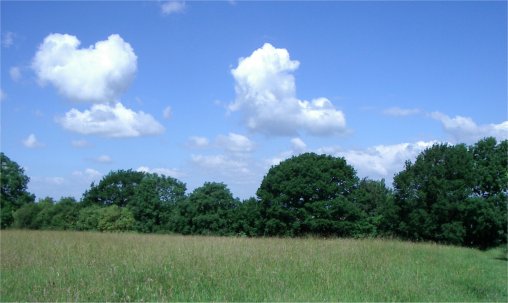


Crossing the bridge into the upper meadow you find yourself surrounded by a completely different plant community. This is because of the underlying clay soil, which restricts drainage.
In the lower part of the field, this can be seen by the growth of various sedges and rushes, plants which prefer damp conditions.
Following the edge of this field is a mature hedgerow, probably several hundred years old. A rough estimate of the age of a hedgerow can be arrived at by counting the number of species in a 30 metre length. One additional species means one century of growth. The hedgerow is like a very narrow woodland, which provides a corridor for wildlife between the woodland and surrounding area.
Hedgerows are a particularly important habitat, as they mimic the woodland edge, so reflect all the stages in the development of a mature woodland. This can clearly be seen in the hedge along the eastern boundary with the scrub layer invading the open grassland and the larger trees growing up behind.
Hedgerow trees are also important as they provide a perch for songbirds, were they can be seen and heard easily by potential mates.